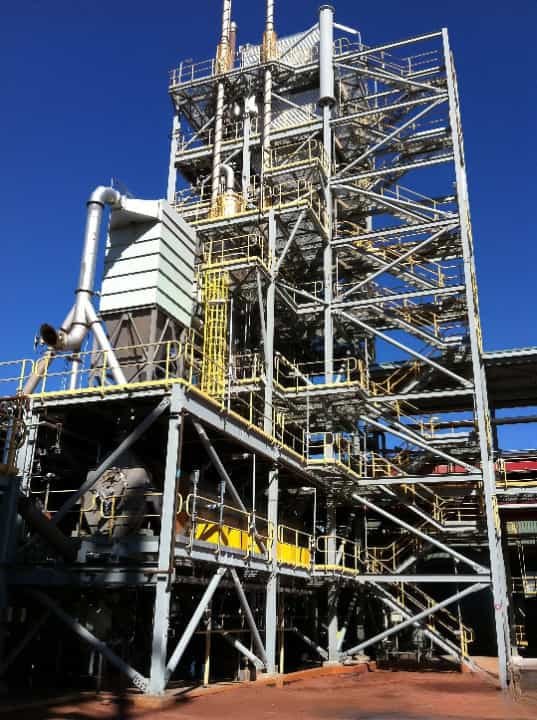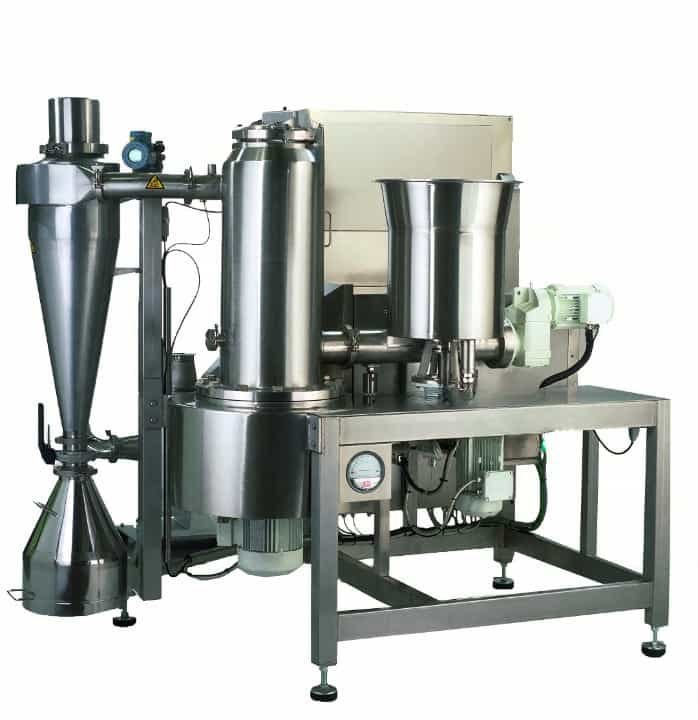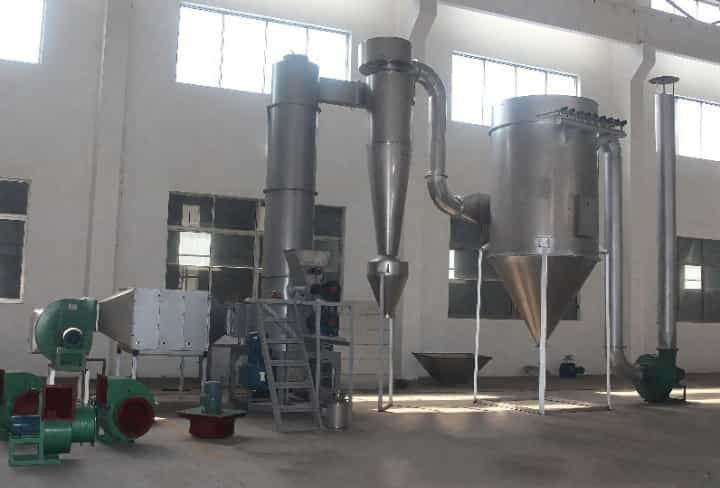A flash dryer is a machine used in factories. It dries wet materials fast with strong, hot air. You put the wet material into the dryer. The hot air spreads out and lifts the particles. This fast air makes a big surface area. It helps remove water from the surface quickly. The material becomes dry and easy to pour. Many industries use a flash dryer. Food processing and screen printing are some examples. It helps make products better and faster.
Key Takeaways
Flash dryers blow hot, fast air to dry wet stuff quickly. This makes things dry and easy to move. They dry things in seconds, so they save energy. They also protect heat-sensitive products from getting ruined. There are different flash dryers like open-circuit, partial gas recycle, and superheated steam. Each type is good for certain jobs and industries. Flash dryers work with many things like powders, slurries, and pastes. They are used in food, medicine, chemical, and other industries. Using flash dryers makes products better and speeds up work. They help save money and can be set up in different ways for many drying jobs.
How Flash Dryers Work
Flash dryers rapidly dry materials by using high-velocity hot air. The process involves dispersing wet materials into a stream of hot air, causing immediate evaporation of moisture.
Drying Process
Flash dryers remove water from wet materials very fast. First, you put the wet material into a drying chamber. Hot air moves quickly into the chamber. The hot air mixes with the wet material. When the hot air touches the particles, water turns into vapor fast. Most water leaves the surface of the particles right away. The dry material then comes out of the air and is collected for use.
Here is an easy way to understand the drying steps:
Put the wet material into the chamber.
Hot air blows in at high speed.
The hot air mixes with the material and dries it fast.
The dry product separates from the air.
Collect the finished dry product.
Mechanical dispersers and venturi systems are important in this process. A mechanical disperser throws the wet powder into fast-moving air inside the venturi section. This makes each particle have more surface area. The venturi section helps water leave the powder quickly when it meets the hot air. This step is key for fast drying and keeps the product good.
Key Features
Flash dryers are special because they dry and move materials at the same time. They can dry things in just a few seconds. Because the drying is so quick, you can use higher heat without hurting materials that are sensitive to heat. The design also helps keep the size of the particles even.
Some main features are:
Pneumatic systems that move and dry at once.
Short drying times, so things do not get too hot.
Even moisture and particle size in the dried product.
Flexible setups, like open-circuit or partial gas recycle, to fit your needs.
Feeding systems such as screw conveyors or rotary valves for different materials.
Safety features like explosion vents, dust control, and temperature checks to keep you and the machine safe.
You can see normal working settings in this table:
Parameter | Typical Range / Description |
|---|---|
Inlet Air Temperature | |
Up to 1,100°F (600°C) for heat-tolerant products | |
Can be engineered as high as 1,470°F (800°C) | |
Product Types | Filter cakes, slurries, paste, sludge, powders, granules |
Operational Notes | Short residence time, evaporative cooling, higher inlet temperatures |
Modern flash dryers use smart controls and sensors. These help you watch the temperature and air flow all the time. You can change the settings to stop overheating and keep drying safe and fast.
Materials Handled
Flash dryers work with many kinds of materials. They are good for things with lots of water and for products that need to stay loose and easy to pour. The system can handle both fine powders and bigger granules. You can dry filter cakes, slurries, pastes, and some materials that cannot take much heat.
Here is a table with common materials for different industries:
Industry | Common Materials Processed |
|---|---|
Food Industry | Starches, spices, instant foods |
Pharmaceutical Industry | Active pharmaceutical ingredients (APIs), compounds |
Chemical Industry | Chemicals, pigments, other compounds |
The amount of water and the size of the particles you start with change how well the flash dryer works. Small particles dry faster because water can leave them more easily. Big particles may look dry outside but can still have water inside. By changing the size and mixing, you can make drying better and help the system work faster.
Flash dryers help you make good, easy-to-dry products with even moisture and size. They give you a safe and quick way to dry many types of materials.
What Are the Different Types of Flash Dryers?
Flash dryers come in several types, including direct, indirect, and ring dryers. Each type uses different methods to achieve rapid moisture removal from materials.

Open-Circuit
Open-circuit flash dryers use fresh air one time. You put wet material inside the dryer. Clean air comes in and dries the material. The air leaves as exhaust after drying. This type gives you the best product quality. It only uses clean air. You do not need to worry about leftover gases. Open-circuit flash dryers are good for food and dairy. They keep products pure. You see them used for milk powders and fruit powders.
Partial Gas Recycle
Partial gas recycle flash dryers use most of the exhaust gas again. About 70% of the air goes back into the dryer. Only 30% leaves as exhaust. This saves energy and money. It also makes the dryer safer. Less oxygen means less chance of fire. You use these dryers for chemicals and pigments. They are good for products that need careful drying. These dryers often use a ring dryer design. This keeps the exhaust temperature low and protects your product.
Superheated Steam
Superheated steam flash dryers use steam, not air. First, all air is taken out of the system. Only steam moves inside the dryer. The steam dries the material and then is used again. This type saves a lot of energy. You can use the heat from the steam again. Superheated steam flash dryers are best when you want to save energy. They are good for jobs that need a steam atmosphere. You might use them for drying technical ceramics or special chemicals.
Tip: You can see the main differences between these types in the table below.
Dryer Type | Operation Principle | Gas/Air Handling | Energy Efficiency & Heat Usage | Product Quality & Other Effects |
|---|---|---|---|---|
Open-Circuit | Fresh air goes through once and leaves as exhaust. It works at the lowest exhaust temperature for the job. | Uses only clean, dry air. No gas is recycled. | Uses more heat. Some heat can be saved with heat exchangers. | Makes the best product. There is little risk of heat damage. |
Partial Gas Recycle | Most exhaust gas is used again. This makes the air more humid and lowers oxygen. | About 70% of the gas is recycled. 30% leaves. | Saves more energy because it recycles gas. Needs higher outlet temperatures. | Less risk of fire. Uses a Ring Dryer to keep exhaust cool. |
Superheated Steam | Air is removed at the start. Only superheated steam moves inside. Uses a gas/gas heat exchanger. | All air is gone. Only water vapor leaves and is recycled. | Very energy efficient. Heat from steam can be used again. | Good for saving energy. Works for jobs that need steam. |
Flash dryers are used in many industries. Here are some common uses:
Industry Sector | Ideal Industrial Use Cases for Spin Flash Dryers |
|---|---|
Food and Beverage | Milk powders, whey protein, fruit and vegetable powders, instant coffee and tea |
Pharmaceutical | Drying active ingredients, excipients, fillers, herbal extracts |
Chemical | Specialty chemicals, pigments, colorants, polymers, resins |
Ceramic and Advanced Materials | Technical ceramics, catalytic materials, electronic powders |
Agrochemical | Wettable powders of pesticides, herbicides, fertilizers, soil amendments |
Environmental and Waste Management | Processing sludge, recovering materials, producing absorbents |
Nutraceutical and Functional Food | Protein concentrates, probiotics, enzymes, botanical extracts |
You can also make flash dryers to fit your needs. You can change the chamber size, air temperature, and feed system. You can add special controls, filters, or mixing tools. This helps dry sticky or heat-sensitive materials. You can add emission controls to help the environment. Custom flash dryers help you get the best results for your product.
What Are the Benefits of Using a Flash Dryer?
A flash dryer offers quick drying times, energy efficiency, and preservation of product quality. It is ideal for processing heat-sensitive materials and achieving uniform moisture content.

Efficiency
You want drying to be quick and save money. Flash dryers do both jobs well. They take out water in just seconds, not hours. This fast speed lets you dry more things in less time. You use less energy because the heat is on for a short time. The table below shows how flash dryers are better than other dryers:
Aspect | Flash Dryers | Rotary Drum Dryers | Spray Dryers | Fluid Bed Dryers | Tray Dryers |
|---|---|---|---|---|---|
Thermal Efficiency | 60-75% | Lower | 50-65% | Good | Lowest |
Drying Time | 5-15 sec | 15-45 min | Longer | 5-30 min | 8-24 hrs |
Labor Requirements | Low | High | High | Moderate | High |
Energy Cost Savings | High | Low | Moderate | Moderate | Low |
Flash dryers can pay for themselves in less than five years. You also save money on workers because these dryers use machines to do the work. When you use a flash dryer, you can make more products and spend less money.
Tip: Fast drying with flash dryers helps stop slowdowns and keeps your factory running well.
Product Quality
You want your products to be good every time. Flash dryers help you do this. The short drying time keeps sensitive things safe from too much heat. You keep the color, taste, and nutrients in food. In medicine, you keep the important parts stable. Flash dryers use careful heat and mix things evenly. This gives you products that are the same size and have the same amount of water.
You throw away less and have fewer bad batches.
You keep your products safe and nice to look at.
You can dry powders, granules, and sticky pastes without losing quality.
Flash dryers are great for things that cannot take much heat. You can count on them to give you good results.
Versatility
Flash dryers can dry many kinds of things. You can dry powders, slurries, pastes, and filter cakes. These machines work in food, chemicals, medicine, mining, and more. You can use a flash dryer for dairy, pigments, minerals, and even cleaning water. This means you can use one machine for many jobs.
Pharmaceuticals
Chemicals
Minerals
Agriculture
Water Treatment
You can change the settings to fit what you need. Flash dryers help your business grow and let you try new products.
What Are the Applications of Flash Dryers?
Flash dryers are widely used in various industries for rapid drying of materials. They efficiently reduce moisture content within a short time, making them ideal for heat-sensitive or fine particulate materials.

Screen Printing
Flash dryers are used a lot in screen printing shops. They help dry one ink layer before adding another color. The flash dryer uses infrared heat to set the ink fast. This makes prints look bright and sharp. The dryer does not squash or hurt the print like some heat presses. You can use it to partly dry ink between colors. This keeps your designs neat and clear. But, it can be slower for fully drying or for pretreatment than conveyor dryers.
Industrial Uses
Flash dryers are used in many industries. They work well for food, chemicals, and minerals. The table below lists some common uses:
Sector | Common Applications |
|---|---|
Food Processing | Milk powder, whey protein, casein, starches, egg powder, coffee extracts, vegetable proteins |
Chemical Industry | Catalysts, pigments, additives, resin drying, powder coating, salt processing, fertilizer production |
Mining & Minerals | Metal ore concentrates, kaolin, bentonite, coal slurry processing, coal waste utilization |
This machine dries many kinds of products. It dries things fast and keeps the quality high. It works well even with materials that are easy to damage.
Comparison with Other Dryers
You might wonder how a flash dryer is different from others. This machine dries things in just seconds. It helps keep the color, nutrients, and chemicals safe in your products. Rotary dryers take much longer and can harm sensitive things. Tunnel dryers also need more time and energy. This can make results uneven. Flash dryers give you short drying times and even heat. Your powders and pastes stay in good shape. You save energy and get a steady, high-quality product.
Tip: If you need to dry powders or pastes that are sensitive to heat, a flash dryer works better and faster than most other dryers.
Now you know a flash dryer uses hot air to dry things fast. You learned how it works and what types there are. You also saw how it helps many industries. Before picking one, think about these steps:
Make sure you have enough space for the machine.
Think about how you will move materials and what size dryer you need.
Check what controls you want and how you will keep it working well.
If you need help, companies like Acmefil Engineering and GTF Technologies can give you custom plans, teach you how to use the dryer, and help you at every step.
FAQ
What materials can you dry in a flash dryer?
You can dry powders, slurries, pastes, and filter cakes. Flash dryers work well for food, chemicals, minerals, and even some medicines. You get dry, free-flowing products quickly.
How do you control the temperature in a flash dryer?
You set the temperature using built-in controls. Sensors watch the heat and adjust it as needed. This keeps your product safe from overheating.
Is a flash dryer safe to use?
Yes, flash dryers have safety features. You get explosion vents, dust control, and temperature alarms. These help protect you and your workplace.
How do you clean a flash dryer?
You can clean most flash dryers by opening access doors and using air or water sprays. Some models have special cleaning systems. Always follow the manufacturer’s instructions.
Tip: Clean your flash dryer often. This keeps it working well and helps you avoid product mix-ups.

